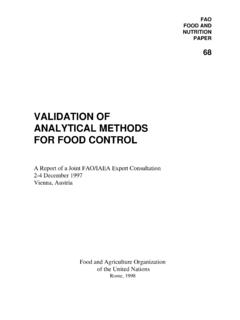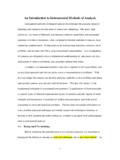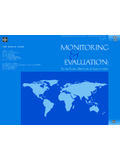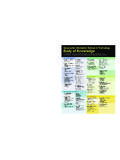Transcription of Analytical Methods: A Statistical Perspective on …
1 Analytical methods : A Statistical Perspective on the ICH Q2A and Q2B Guidelines for Validation of Analytical methods ABSTRACT Vagueness in the ICH Q2A and Q2B guidelines necessitates effective protocol design and data analysis. For specificity (detection in the presence of interfering substances), the goal is Statistical differences with meaningful implications on assay performance. Linearity (results directly proportional to concentration of analyte in the sample) is typically demonstrated via least squares regression. Accuracy (difference between measured and true values) usually is presented as a percent of nominal. Precision analysis is vital because it supports claims of accuracy and linearity.
2 A well-designed experiment and statistically relevant methods will facilitate method validation in accordance with ICH guidelines. Several articles have been published on the requirements of method validation for Analytical ,2 Most of these articles do not, however, concentrate on the protocol design and analysis of data from these studies. The International Conference on Harmonization (ICH) guidelines on Validation of Analytical Procedures (Q2A and Q2B) delineate the guidance and methodology for validation characteristics of an Analytical procedure, but as in many guidelines, the terminology is vague enough to allow for several acceptable approaches and analyses.
3 Appropriate Statistical methods should be used; in addition, all relevant data collected during validation and all formulae used for calculating validation characteristics should be submitted and discussed as appropriate. The following excerpt from the ICH Q2B guideline is an example of the vagueness that can trouble many scientists: Approaches other than those set forth in this guideline may be applicable and acceptable. It is the responsibility of the applicant to choose the validation procedure and protocol most suitable for their product. However, it is important to remember that the main objective of validating an Analytical procedure is to demonstrate that the procedure is suitable for its intended purpose.
4 Due to their complex nature, Analytical procedures for biological and biotechnological products in some cases may be approached differently than in this The ICH guidelines suggest combining individual validation characteristics to minimize total testing. A Statistical approach to validation of Analytical methods can minimize the amount of testing while meeting the requirements of the guidelines. This assertion is based on the following comment from the ICH Q2B document: In practice, it is usually possible to design the experimental work such that the appropriate validation characteristics can be considered simultaneously to provide a sound, overall knowledge of the capabilities of the Analytical procedure, for instance: specificity, linearity, range, accuracy and TYPES OF Analytical methods Dec 1, 2006 By: Steven Walfish BioPharm International Page 1 of 6 BioPharm International - Analytical methods .
5 A Statistical Perspective on the ICH Q2A are four common types of Analytical methods , each with its own set of validation requirements. The level of stringency is proportional to the criticality of the method in testing drug product. The four most common types of Analytical procedures are: zIdentification tests zQuantitative tests for impurities' content zLimit tests for the control of impurities zQuantitative tests of the active moiety in samples of drug substance, drug product, or other selected component(s) in the drug product. The elements of the Analytical method requiring proof through validation as contained in the ICH Q2A guideline are summarized here in Table SPECIFICITY Specificity usually is defined as the ability to detect the analyte of interest in the presence of interfering substances.
6 Specificity can be shown by spiking known levels of impurities or degradants into a sample with a known amount of the analyte of interest. A typical testing scheme would be to test a neat sample and a minimum of three different levels of interfering substances. Several different analysis methods have been proposed to determine specificity; these include percent recovery, minimum difference from baseline, and analysis of variance. Currently, there are differences in opinion regarding the appropriateness of using analysis of variance (ANOVA) for showing a difference between baseline and a spiked sample. The goal is not to find statistically significant differences that have no practical value, but to find Statistical differences that have meaningful implications on assay performance.
7 It is common in clinical diagnostics to use a t-test to assess sensitivity (minimum detected dose or concentration), specifically using a method by One proposed method, which combines both the Statistical rigor of analysis of variance and the appropriateness of meaningful differences from baseline, is to use equivocal tests or a method similar to the one used to assess In this method, the comparison must be within the equivocal zone, though not statistically different. Figure 1 shows four scenarios; in each of these, the equivocal zone is determined by the distance between and + , which is the predetermined level that is scientifically not different than the target.
8 1. In scenario 1, the 95% confidence interval (denoted by the horizontal line) contains the target, and the entire 95% confidence interval is contained in the equivocal zone. In this case, both Statistical significance and scientific judgment agree. 2. In scenario 2, the 95% confidence interval does not contain the target; therefore, it would be considered statistically different, although the 95% confidence interval is fully contained in the equivocal zone. In this case, one would judge the sample to be scientifically similar to the target. 3. In scenario 3, the 95% confidence interval would lead one to conclude there is no Statistical significance, but the 95% confidence interval is not fully contained in the equivocal zone.
9 Because the variability is larger here, one cannot conclude there is a Statistical difference, but scientifically it is shown to be possibly too large a difference. 4. In scenario 4, neither the 95% confidence interval nor the equivocal zone shows that the sample is equivalent to the target. In scenarios 1 and 4, both methods agree, whereas scenarios 2 and 3 have some discrepancy. In scenario 2, the precision is so good that the Statistical test fails, although in a practical sense it is similar to the target. Scenario 3 gives the most confusing conclusion; because the confidence interval is not fully contained in the equivocal zone, one might increase sampling or perform a retest to attempt to reduce the variability.
10 There is no clear answer for this scenario. Unfortunately, the selection of the equivocal zone and associated value is still being debated in the Statistical and scientific community. A potential compromise is to use some percentage, such as 75% of the specification width, as the equivocal zone for specificity testing. Table 1. Assuming one needed to show acceptable results for all characteristics, a testing scheme could be developed to meet the minimum test requirements of the guidance. Figure 1 Page 2 of 6 BioPharm International - Analytical methods : A Statistical Perspective on the ICH Q2A minimum of three repeat readings should be taken for each sample; the ideal would be six repeats.







